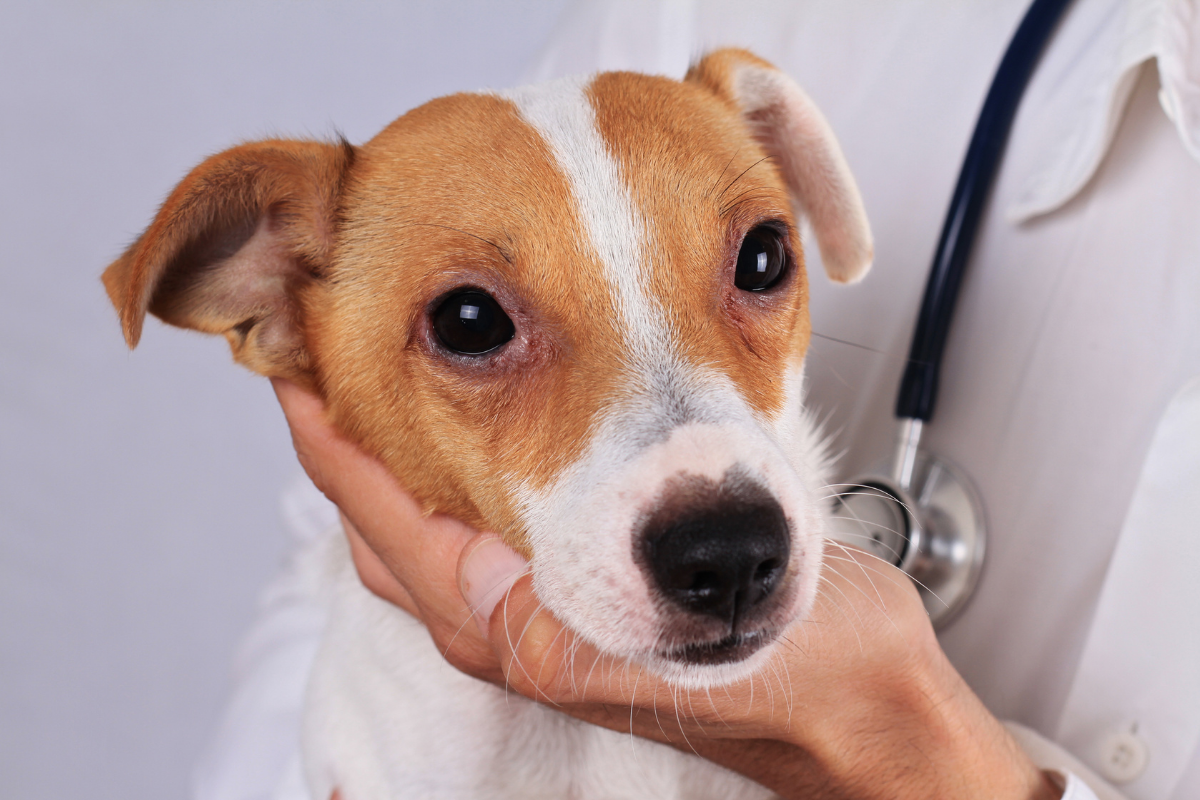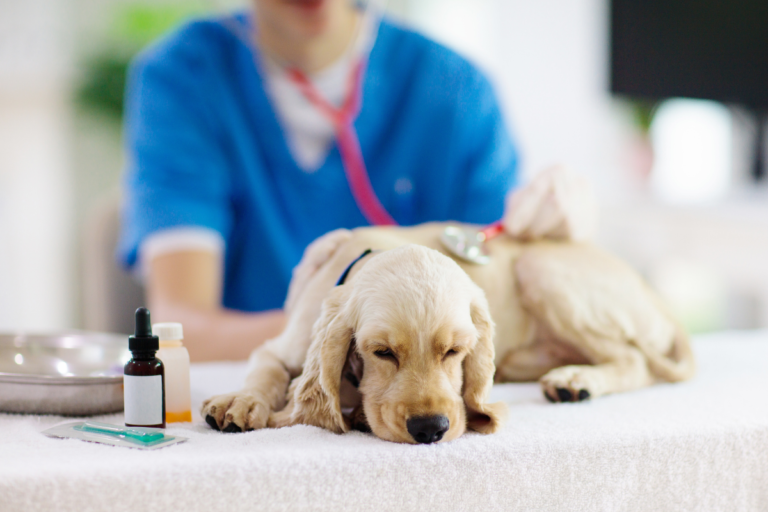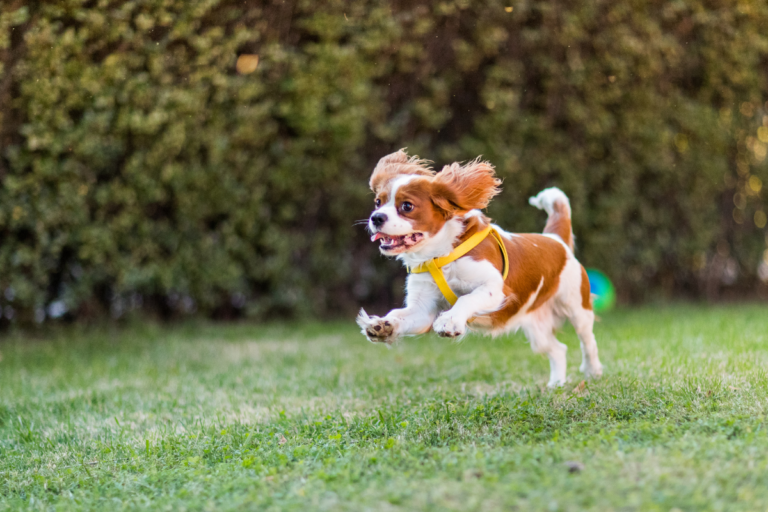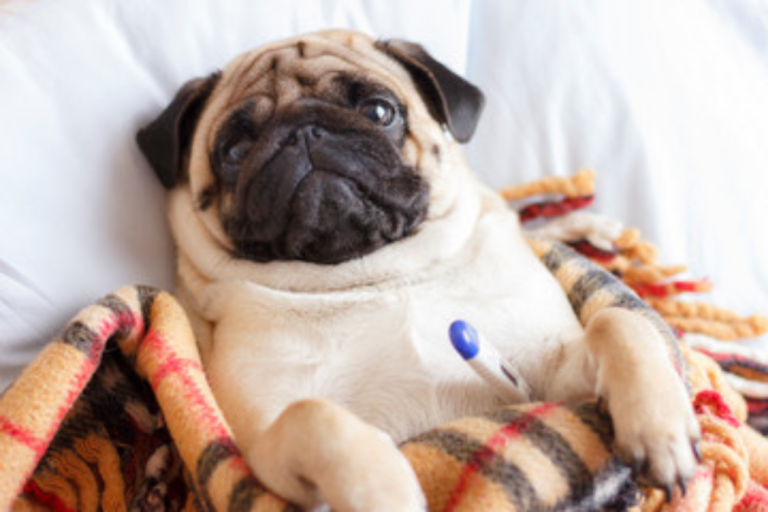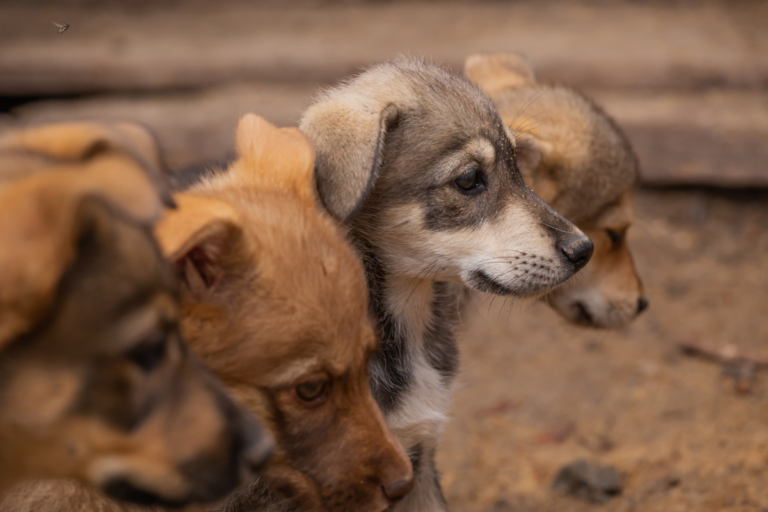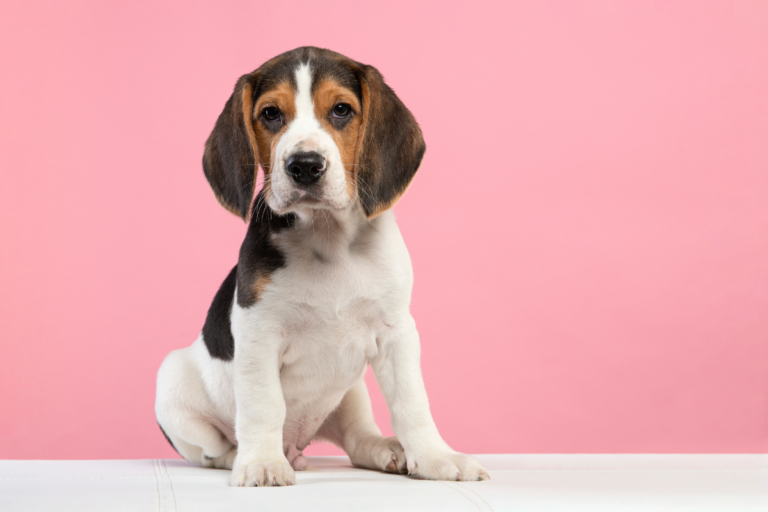Unveiling Yeast Infection in Dogs: Signs You Cant Ignore
Understanding Yeast Infections in Dogs
Causes of Yeast Infections
So, when it comes to our furry friends, yeast infections are not just a human problem. Our dogs can get them too, mostly thanks to a pesky little fungus named Malassezia. This critter loves to hang out in warm, moist places on the skin, causing itchiness that’ll make your dog look like it’s doing the cha-cha. Over time, the skin can get all thick and weird-colored (check out PetMD if you’re curious).
What stirs up these unwanted guests?
- Messed Up Skin Guard: Once the skin barrier is compromised, the yeast gets a big ol’ welcome sign.
- Allergies: When allergies flare up, they invite yeast to set up camp.
- Greasy Skin Issues: Overproduction of skin oils, like with seborrhea oleosa, can lay out the red carpet for yeast.
- Weakened Defenses: A slack immune system gives yeast the green light.
Common Symptoms to Watch For
We’ve gotta stay sharp and watch for signs that scream “yeast infection!” Spotting it early means less hassle and less discomfort for your pup.
Keep an eye out for:
- Skin Goes Funky: Look for skin turning thicker, off-color, or slick (reference Small Door Vet).
- Head Wiggles: Ear involvement can turn your dog into an unintentional headbanger.
- Like Crazy Itching: Paws, ears, groin, and folds are hotspots for scratching marathons.
- Foot Frenzy: Paws might become a chew toy if yeast is in the mix.
- Warmth and Swelling: Feel for heat and puffiness where it shouldn’t be.
- Stinky Situations: A yucky, , earthy odor speaks volumes in the world of yeast.
- Hair Fallout: Patches of baldness can crop up.
- Drenched Drools: If the infection gets FaceTime, drooling might hit overdrive.
| Symptom | Description |
|---|---|
| Skin Funkiness | Thicker, greasy, off-color skin |
| Head Wiggles | Especially with ear issues |
| Crazy Itching | Frequent in hot spots like ears, paws, close folds |
| Foot Frenzy | Paw licking turns excessive |
| Warmth & Swell | Heating and swelling on the site |
| Funky Smell | Odd, distinctive odor |
| Hair Fallout | Bald patches in affected areas |
| Drenched Drools | Too much drooling if mouth/face is involved |
For those eager to get ahead of this, hit up our diagnostic tests for dogs and learn about antifungal medications. Keeping things squeaky clean is a must, so our guides on practical hygiene and handling environmental factors have got your back.
Some breeds keep dealing with yeast infections like a bad soap opera. If your furball is one of those breeds, visit us at cavalier health and dog breeds that stand strong to get hip with the genetic plays and risks. We’re in this together, and we’ve got the scoop on keeping your paws up and problems down.
Areas Affected by Yeast Infections
When it comes to yeast infections in dogs, knowing where these pesky critters like to hang out helps us tackle them head-on. Different spots on your pup’s body react in various ways, so let’s chat about the common targets: ears, skin folds, paws, and the groin.
Ears and Ear Infections
Yeast loves to take up residence in dog ears, often leading to yeast otitis. Your pup might not be thrilled about it, so here’s what to watch for:
Symptoms in the ears include:
- Constant head shaking
- Excessive ear scratching
- Gunky brown ear goobers
- Nose-wrinkling stink
- Red, swollen ear bits
Catching these signs early stops a worsening mess. Sniff out more on this topic over at dogs and ticks.
| Symptom | Description |
|---|---|
| Head Shake | Non-stop shaking to shake off discomfort |
| Ear Scratch | Relentless scratching due to itchiness |
| Ear Grunge | Thick, dark discharge from the ear |
| Funky Smell | Potent smell wafting from the ears |
| Red and Puffy | Swelling inside the ear canal |
Skin Folds, Paws, and Groin
Yeast thrives in your pup’s warm, damp hiding spots. Skin folds, paws, and the groin are favorites for this freeloader.
Skin Folds
Wrinkly wonders like Bulldogs and Pugs tend to collect yeast in their folds.
Symptoms in skin folds include:
- Red, bumpy patches
- Slick, greasy skin
- Scratching fits
- Yep, a stinky aroma
For breed-specific info, ramble over to bulldog health problems and pug health problems.
Paws
Yeast on the paws is like having a bad itch that just won’t quit, making poochies lick or chew a lot.
Symptoms in the paws include:
- Brown gunking between pads
- Over-licking and chewing
- Puffy, red toes
- Bald spots
Groin
The groin’s another choice locale for yeast hangouts.
Symptoms in the groin include:
- Itchy red skin
- Bald patches
- Slick, greasy fur
- Brownish tint
Peek at our page on ringworm on dogs’ stomach for more on tackling skin issues.
| Area | Symptom | Description |
|---|---|---|
| Skin Folds | Red Patches | Inflamed, bumpy skin in the folds |
| Paws | Brown Tint | Darkening between the pads |
| Paws | Licking Feast | Constant licking and chewing of paws |
| Groin | Itchy Spots | Red, inflamed areas around the groin |
Spotting these clues on your dog can be a game-changer in managing yeast infections. If these signs pop up, check in with your vet and dive into more doggy dilemmas on our dog diseases and symptoms page.
Diagnosing Yeast Infections
Diagnostic Tests for Dogs
Figuring out if our dogs have yeast infections doesn’t have to be tricky. With the help of our trusty vets, there are several ways to get to the bottom of it and choose the best treatment plan.
- Medical History and Physical Exam:
- The vet starts by asking about the dog’s medical past and giving them a good once-over. This helps spot symptoms and figure out what might be causing the trouble.
- Cytology:
- Here, the vet takes a close look at samples from the dog’s skin, ears, or paws under a microscope. It’s a tried-and-true way to spot those pesky yeast organisms (PetMD).
- Tape Impression:
- This involves pressing clear tape on the dog’s troubled skin to collect some cells. After a little bit of staining, the vet examines it under a microscope to find yeast.
- Culture:
- A bit of hair or skin goes into a special dish to get yeast to grow. This helps figure out what type of yeast is causing the issue and how to tackle it best.
- Skin Biopsy:
- When things get serious, a small skin sample is taken to look at under a microscope. This helps confirm what’s going on and how bad it is.
- Otoscope Examination:
- If ear infections are part of the mix, the vet might use an otoscope to peek inside the ear and grab a sample. This tells us if it’s yeast or some other infection (Small Door Vet).
| Diagnostic Test | Purpose |
|---|---|
| Medical History and Physical Exam | Initial check-up |
| Cytology | Spotting yeast organisms |
| Tape Impression | Gathering cells for microscope checks |
| Culture | Finding out yeast type |
| Skin Biopsy | Confirming diagnosis and extent |
| Otoscope Examination | Checking and sampling ear infections |
Identifying the Severity
Figuring out how bad a yeast infection gets helps in choosing the right fix and making sure it doesn’t act up again.
- Mild Infections:
- These make the dog itch a little, with some redness and maybe a small discharge. They’re usually easy to tackle with creams and proper hygiene.
- Moderate Infections:
- Could spread to more areas like skin folds, paws, and ears. These might need both creams and oral meds to sort things out.
- Severe Infections:
- These cover a lot of ground and can cause big issues, like hearing loss due to ear infections (Germantown Animal Hospital). Big problems demand stronger treatments, sometimes even surgery if things get real bad.
Checking how severe the infection is involves both checking out the symptoms and running a batch of tests. Blood work might also be in the mix to rule out other problems making the infection worse.
By accurately getting to the root and size of a yeast infection, we can make sure our pets get the top-notch care they deserve. For more about keeping yeast infections at bay, peep our parts on good hygiene practices and handling environmental triggers.
Treatment Options for Yeast Infections
If your furry buddy is dealing with a yeast infection, don’t stress – we’ve got some great solutions, like antifungal meds, shampoos, and a mix of oral and topical treatments.
Antifungal Medications and Shampoos
The go-to for tackling yeast troubles are antifungal meds and shampoos. They zoom right in on the nasty fungus, bringing relief and clearing up the mess.
| Treatment Option | Frequency | Purpose |
|---|---|---|
| Antifungal Shampoos | Every 3-5 days | Scrub-a-dub while tackling hotspots of infection |
| Medicated Baths | Whenever needed | Deep clean with that antifungal punch |
| Topical Creams | Daily | Slap it right on those itchy spots |
According to PetMD, lathering up your dog with the right shampoo every few days does the trick. When things get dicey, though, you might need to pop a pill or two. If you’re curious about other pupskin adventures, check our take on skin conditions in dogs.
Oral and Topical Treatments
Oral and topical goodies can pack a punch against yeast infections, especially when things get out of hand or require a more localized approach.
| Treatment Option | Application | Purpose |
|---|---|---|
| Oral Antifungal Medications | As prescribed | For when those fungi crash the party everywhere |
| Topical Medications | Daily | Zeroes in on specific itchy zones |
| Medicated Wipes/Mousse | Whenever necessary | Keeps the infection and inflammation at bay |
Per Zoetis Petcare, diet changes, antibiotics for those pesky bacteria that tag along, and steroids might also be part of the mix to calm the itch or inflammation. For other dental dilemmas, dive into dog gum disease and periodontal disease in dogs.
By mixing up these treatment options, yeast infections in dogs can be managed well, keeping them happy and wagging. Drop by the vet for check-ups and keep up good hygiene to dodge repeat performances. We’ve also penned down some handy tips on good hygiene practices for dogs and dogs and ticks to keep your canine companion in top form.
Preventing Yeast Infections
Good Hygiene Practices
Keeping our pups free from yeast infections can feel like a dance, but with a bit of rhythm and routine, it’s totally do-able. Here’s a simple rundown of steps we can take to keep things itch-free:
- Regular Cleaning: Clean out our doggo’s ears, paws, and those cute little skin folds regularly, especially after their splish-splash sessions. Trust me, they’ll thank us later.
- Dry Those Damp Spots: Nobody likes soggy socks, right? Dogs don’t like soggy skin either. So, after a good wash, pat down those damp spots to keep yeast at bay.
- Our Hands Matter, Too: After giving our dog some TLC, let’s head for the sink and wash up with some antimicrobial soap. Keeps those nasty yeasties from spreading to us or other pets.
- Spruce Up Their Stuff: Don’t forget about their style items! Give their clothes, collars, and beds a regular wash to nix any yeast spreaders hiding out.
- Give a Little Space: If our pooch is looking poorly with a yeast issue, let’s hold off on huggle time to prevent spreading the itch.
Managing Environmental Factors
The great outdoors can sneak inside and cause trouble if we’re not careful, so here’s how to keep the yeast beast at bay at home:
- Beat the Heat and Humidity: Make sure our dog’s space feels more like a fresh breeze than a steam room. Yeast loves warmth and moisture, so keep things airy.
- Food for Thought (and Health!): Serve up some balanced grub, vitamins and all, to keep their tail wagging and their health thriving. Strong bodies can fight off infections better.
- Grooming Routine: Pull out the brushes and give our furry friend some regular grooming love. It helps spot issues early and keeps the coat and skin happy.
- Vet Visits: Schedule regular vet check-ups to catch any sneaky health gremlins, including yeast infections, before they become a real bother.
Looks like with these steps, keeping our doggos happy and healthy is less of a chore and more of a breeze. Want to dig deeper into doggy do’s and don’ts? Check out our articles on dog diseases and symptoms and dog illnesses. Keeping our four-legged pals wagging their tails is what it’s all about!
Breed Predispositions and Risk Factors
Knowing which pups are more likely to grapple with yeast infections can arm us with the info to keep them happy and healthy. Some doggos get the short end of the genetic stick, and there’s some extra stuff that can set things off too.
Breeds at Higher Risk
Certain four-legged friends have a genetic knack for catching yeast infections. These dogs often have floppy ears, extra skin, or furry ear canals that mess with the airflow, inviting trouble. Recognizing your pooch’s potential risk factors means you’re one step ahead in spotting those pesky yeast infection in dogs symptoms.
| Breed | What’s Up? |
|---|---|
| Shih Tzus | Hair blocking those ears? Check. |
| Cocker Spaniels | Ears that flop and some extra skin? Yep. |
| Schnauzers | Hairy ear canals galore. |
| Golden Retrievers | Ears that flop and love for swimming—classic. |
| Labrador Retrievers | Another swimmer with floppy ears. |
| Basset Hounds | More folds, more problems. |
| West Highland White Terriers | Skin folds just being fancy. |
| German Shepherds | Skin woes galore. |
| Maltese | Hair long enough to swing. |
| Dachshunds | More than just cute with those skin folds. |
| Poodles | Dense hair with the drama. |
For more about specific breeds and their little quirks, explore pieces like shih tzu health problems and golden retriever health problems.
Factors Contributing to Infections
- Allergies: Dogs dealing with allergies might find themselves struggling with yeast, as allergens make skin go bonkers and yeast goes wild.
- Skin Folds: Those Bulldogs and Basset Hounds with too much skin? Folds are like little warm hideouts for yeast.
- Floppy Ears: Cocker Spaniels and Golden Retrievers rock those floppy ears, but yeast finds it cozy in there.
- Frequent Swimming: Labradors and Goldens love a splash, but ear can become waterlogged and yeast gets in on it.
- Thick Ear Hair: Miniature Schnauzers and Shih Tzus have ear hair that traps every bit of moisture.
Being clued in on these factors helps us prep and deal with yeast mishaps in our paw pals. Regular vet visits and a bit of hygiene savvy keep yeast far away.
For the scoop on keeping yeast at bay, dive into our tales on good hygiene practices, healthiest dog breeds, and preventing yeast infections.
